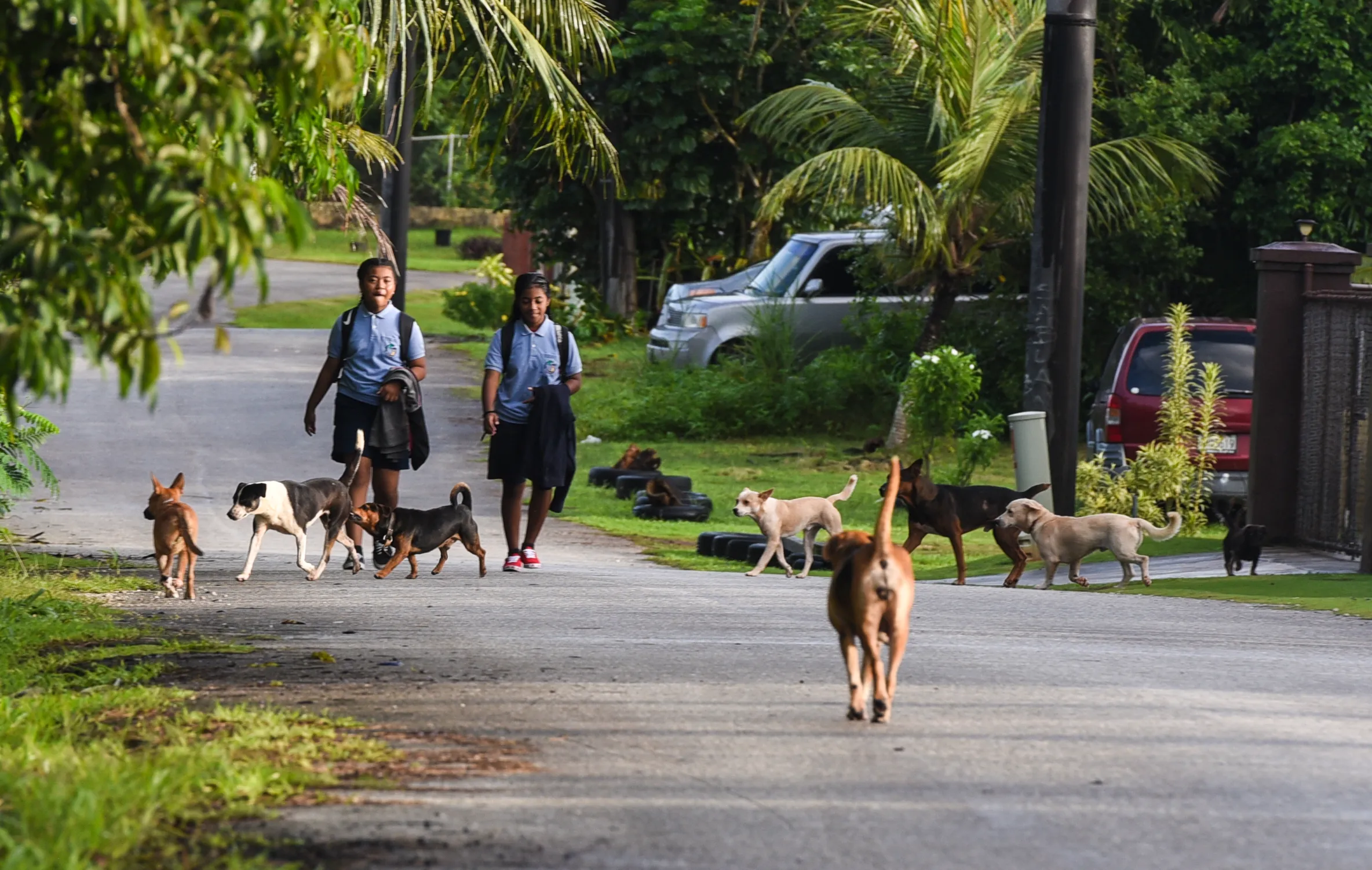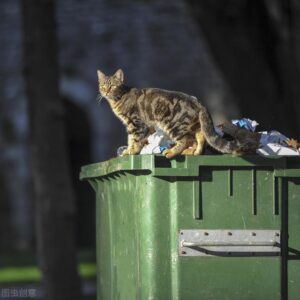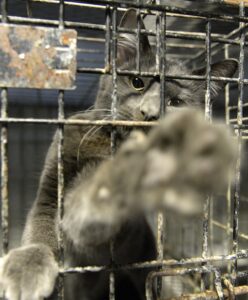The Legal Protection of Animals in Brazil
The Awakening of a Giant Potential
Wildlife trafficking, biodiversity loss, bullfighting are all in the news about Brazil. So is the increase in export of live cattle and sheep, along with the accompanying intensification of livestock production. No wonder many think of the country as one with poor animal protection laws and practices. These issues are real enough and yet I believe strongly that Brazil has great potential to be at the forefront of animal law and policy.
I am not an optimist by default, but I came to appreciate the benefits of a positive approach after learning about the psychological effects of positive reinforcement for instilling good behaviors. Thus, I want to shed light on the positive aspects of animal protection in Brazil to encourage continuing local developments and to offer a different picture of Brazil for those who only have learned about its animal-related problems.
The image I think suits Brazil is that of a sleeping giant in the field of animal protection. In areas such as agriculture, energy and even of tech startups, Brazil has already been characterized this way— a giant about to awaken to its growth potential. Many aspects of local animal law and policy suggest the country is awakening to the existence of this potential and to the need to tap into it for Brazil to preserve its rich animal population. The body of law—if we implement it thoughtfully—can help us become respected international experts in the field.
Giant Potential
Brazil is among a handful of countries around the world with animal protection enshrined in its constitution. The Brazilian Constitution mandates that all practices which represent a risk to the ecological function, cause the extinction of species or subject animals to cruelty shall be prohibited by law (article 225, para 1, item VII). This article has proven to be of great potential to steer policies and practices towards greater protection to animals. On repeated occasions, the Brazilian Supreme Court has been asked to decide whether a certain practice would constitute a lawful cultural/religious manifestation or unlawful cruelty to animals. In most cases, the Court sided with the animals affirming that the protection of animals against cruel practices is an autonomous norm that must be interpreted in light of an implicit constitutional acknowledgment that animals are sentient beings that have an interest in not suffering.
The Constitution also offers a variety of tools to address harm to animals and the environment by setting up a triple-tier system of accountability in case of infringement to article 225. In practice this means that a single incident of harm to an animal can be subject to legal challenges under criminal, administrative and/or civil proceedings. It also establishes that not only individuals, but also legal entities can be held liable for injuries to the environment, including harm to animal’s well-being.
In addition to the Constitution, Federal Law n. 9.605/1998 sets the legal framework for environmental protection. Unlike other jurisdictions, such as the United States, where the anti-cruelty statutes often exempt farm animals, this statute provides for an encompassing definition of animal cruelty. Article 32 states that “practicing an act of abuse, ill-treatment, injure or mutilation to wild, domestic or domesticated animals, native or exotic” is a crime punishable with imprisonment, from three months to one year, plus fine. However, the potential of this article to address harmful farming practices have not been proven yet, but it has great promise to develop a body of tools for animal protection.
Another law on the books with great potential for advancing animal protection is Decree 24.645/1934. For most of the past four decades the content of this decree laid dormant; people mistakenly thought that this norm had been officially revoked and was no longer in force. However, a new interpretation is gaining traction in academic debates and judicial decisions. The new interpretation argues that the 1991 presidential decree that revoked the above decree did not have legal power to do so. The reasoning put forward is that a presidential decree can only revoke norms of the same or lower hierarchy. However, despite the name “decree,” the norm 24.645/1934 has the nature of a law, which holds a higher hierarchy. The explanation for granting Decree 24.645/1934 the status of a law lies in the peculiar historical moment of its adoption, when the president of Brazil held both executive and legislative power.
But you might be thinking, why would one go into the trouble of arguing for the re-statement of a norm issued in 1934 at a time when almost no one spoke for animal protection? The reason advocates are putting efforts into re-instating this decree is twofold. One reason is the possibility of bringing into the legal system more granularity to the definition of animal cruelty as this decree contains a list of more than thirty unlawful practices and situations. Examples include keeping animals in unhygienic places or places that prevent them from breathing, moving or resting; depriving animals of air or light; making an animal travel on foot for more than ten kilometers (six miles) without giving it rest; making an animal work more than six continuous hours without giving them water and food.
The other reason is the possibility to claim that animals have legal standing as the decree refers to animals being “assisted” in court by a public prosecutor, a member of an animal protection entity or their legal substitutes. Having this statutory provision reinstated into the Brazilian legal system would grant animals the right to have their interest examined and protected by the judicial system under their own name. The feasibility of the argument on the validity of Decree 24.645/1934 has recently been put to test on an appeal of a trial court decision that dismissed a case in which two dogs appeared as named plaintiffs. A unanimous vote by the 7th Civil Chamber of the Paraná Court recognized the legal standing of animals. In their decision the justices referred to article 225 of the Federal Constitution and to applicability of Decree 24.645/1934. (7ª Câmara Cível do TJPR, no Agravo de Instrumento nº 0059204-56.2020.8.16.0000)
The Awakening
Wider consciousness about animal sentience and about the giant potential of the above legal provisions have sparked several initiatives within the judicial, legislative and academic spheres.
In the judicial sphere
One of the landmark cases in animal protection is the Supreme Court’s recognition that practices such as farra do boi and vaquejada are intrinsically cruel, and therefore a violation of article 225, paragraph 1, item VII of the federal constitution. Farra do boi, a practice most common on the Santa Catarina coast entails an ox being let loose on the street on the days preceding Easter for people to provoke, harass, beat and chase the animal as if they are harassing Judas for his betrayal of Jesus Christ. In 1997 the Court reviewed a case related to farra do boi and found it to be a violent and cruel practice and ordered the authorities from that state to prohibit this practice. Farra do boi became illegal but unfortunately not eradicated as attempts to carry out this practice clandestinely are still occurring. However, the government apparatus is now directed to prevent and punish this practice and not to promote it as in the years prior to the lawsuit.
Two decades after another similar case reached the Supreme Court again. The case addressed vaquejada, a competition that takes place mostly in northeastern Brazil, consisting of knocking down an ox by pulling its tail. The Court found vaquejada to be intrinsically cruel and therefore declared the Ceará state law that attempted to regulate—rather than eliminate this competition—to be unconstitutional. Regrettably, as Brazilians awaken to the potential of the constitutional provision some backlashes have occurred.
Just months after the Supreme Court ruling, the Congress approved an amendment to the Constitution to add the following paragraph: “Sports practices that use animals are not considered cruel, provided they are cultural manifestations, in accordance with § 1 of art. 215 of this Federal Constitution, registered as an intangible asset that is part of the Brazilian cultural heritage, and must be regulated by a specific law that ensures the welfare of the animals involved.” The Congress also approved a law declaring vaquejada and other events as cultural manifestations. This brought legal uncertainty as the current situation of vaquejada is controversial, with the practice being admitted in some locations and denied in others. But the story of vaquejada is not finished yet. The amendments to article 225 of the Constitution are under two legal challenges (ADI 5772 and 5778).
In the legislative and regulatory sphere
Measures to reduce or eliminate animal testing are progressing in the country. The National Council for the Control of Animal Experimentation (CONCEA) has issued three normative resolutions which in total validate 25 alternative methods for the use of animals for specific ends. Moreover, 12 states have enacted legislation banning the use of animals to test cosmetic products and their ingredients. Worth noting that the National Association of Cosmetic Manufacturers tried to overturn these laws by filing a lawsuit at the Federal Supreme Court. However, the constitutionality of state-legislation restricting the use of animals has been upheld by the justices (ADI 5995 and 5996).
In the realm of farm animals, the greatest achievements were the strengthening of animal welfare requirements brought by Decree 9.013/2017 and by normative instruction n. 113/2020. The former brings a revised set of rules adopted in 2017 regarding the sanitary inspection of products of animal origin. This expanded the requirements for food-producing businesses to avoid mistreatment of the animals from the moment of their loading at the farm up to the moment of slaughter. It now requires businesses to maintain animal welfare- friendly facilities and equipment to better accommodate the need of animals. Failure to comply with these requirements is a punishable offense.
The other achievement comes with the Brazilian Ministry of Agriculture’s adoption of norm n. 113/2020. This was a long-awaited norm given the Brazil’s growing pig sector. The newly established norm introduces welfare requirements for commercial pig farms, including the need for housing facilities to be designed to reduce the risk of injury, illness or stress to the pigs and allow for the safe handling and movement of the animals. The norm also requires farmers to transit from individual stall to group breeding system. The latter is recommended by animal welfare scientist as it provides opportunities for pigs to engage in exploratory and foraging behavior and to interact socially with other pigs. The timeline for transition to this new system varies from 10 to 24 years, which is much longer that what animal advocates aimed for. But there is hope this system will become mainstream before these deadlines as the four largest companies in the pig sector have voluntarily committed to implement group housing by 2025.
In the Academic Sphere
Other achievements worth recalling in Brazil’s animal law trajectory include strides in the academic sphere. Brazil was a pioneer in Latin America in the creation of a specialized publication on animal law. The Brazilian Animal Law Journal was launched in 2006 and is still a top-ranking publication. Universities, and other educational institutions are also gradually incorporating animal studies in the curriculum of their courses as an elective autonomous discipline. This increase in local animal studies is also leading to the elaboration of post-graduation specialization courses in animal protection. At first this trend focuses on courses of animal welfare for students in natural science such as veterinarians, biologists and zootechnicians, but more recently we see courses on animal law being offered to these professionals and to those of social science. The benefit of the increase in education in animal protection is phenomenal. Several initiatives mentioned above are led by professionals who attended these courses during or after their graduation.
Looking ahead
The Brazilian legal framework and the initiatives that I’ve set out here already suggest that Brazil has a giant potential to advance in animal protection. But the full potential of its legal framework has not yet been completely unleashed. For that continuing progress in education and political commitment are needed.
The road ahead looks bright. As I was wrapping up this writing, another initiative was adopted that confirms that Brazil is indeed awakening to animal protection matters. Starting January 2023, the Brazilian Ministry of Environment will have a directorate to focus on “biodiversity, forests and animal law.” This initiative not only takes animal protection one tier higher in the institutional framework but it also expands the mandate of the Ministry of Environment in this remit. The new administrative office will be responsible for the elaboration, monitoring, evaluation and implemention of policies, programs and projects aimed at protecting animals. The new mandate of this directorate also includes support for the mobilization of civil society entities in the discussion and implementation of animal protection policies. It also includes the proposal of norms to advance national implementation of international agreements relating to animal welfare, protection and rights. I root for this mandate to be fully implemented to address those problems that harm animal well-being, as well as Brazil’s image in the area of animal protection. Brazil can and should use its giant potential wisely to improve the protection of animals here and elsewhere by means of setting examples for other countries to follow.




